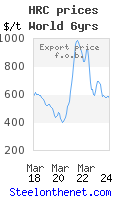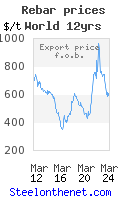Pennsylvania's Abandoned Mine Problem [BlackDiamond]
Pa.'s coal history leaves costly legacy of abandoned mines
July 16, 2005
LEMONT FURNACE, Pa. - Emory Vall points out more than a dozen short capped pipes jutting from a field behind his Fayette County home, an area he refers to as the cemetery.
"They're trying to kill us," Vall says looking at the pipes, where state officials have pumped material in the ground to snuff a 22-acre underground fire that has been burning for more than 30 years. The Percy Mine fire is one of about three dozen burning in abandoned mines across Pennsylvania.
There's no visible smoke or flames, but Vall worries about the carbon monoxide or his two-story home being damaged by subsidence. The stress of living near the fire has triggered health problems, he says, and forced him to retire from his job driving tractor-trailers.
About 1.6 million Pennsylvanians live within one mile of an abandoned mine, which have become dangerous and environmentally disastrous reminders of the state's past. Miners have pulled coal from Pennsylvania's land for nearly 250 years, fueling the Industrial Revolution, railroads, the steel industry and two world wars.
But for much of that time, mining was unregulated. When the coal was gone, the operator usually walked away, abandoning the mines and leaving behind a myriad of environmental and safety problems: acid mine drainage, underground fires, often unstable highwalls, open shafts, unsightly waste coal piles and water-filled pits.
"The winning of two world wars was fully dependent on the ability to have abundant, cheap coal," said Bruce Golden, executive director of the Western Pennsylvania Coalition for Abandoned Mine Reclamation. "But the places where it was mined are still paying for it."
Since 1989, 40 people have died on abandoned mine lands in Pennsylvania and dozens of people have been injured, according to the state Department of Environmental Protection and the U.S. Mine Safety and Health Administration.
Three years ago, nine miners in Somerset County narrowly avoided death when they were rescued after 77 hours underground in the Quecreek mine. They had accidentally cut into an abandoned, flooded mine next to it. They were relying on maps that showed an old tunnel was about 300 feet away.
No other state has the problem as severe as Pennsylvania, which produced about one-third of the nation's coal before a federal cleanup law was passed in 1977.
The state has abandoned mines in 45 of Pennsylvania's 67 counties. They account for about 250,000 acres and more than thousands of miles of poisoned streams, said Tom Rathbun, a state Department of Environmental Protection spokesman. That includes about 1,000 miles of the west branch of the Susquehanna River and its tributaries.
"It makes it one of the largest concentrations of polluted water in the country," Rathbun said. Pennsylvania has more than 83,000 miles of moving water, more than any other state, he said.
No one knows for certain how many abandoned mines there are in Pennsylvania, but Rathbun said there are likely thousands. They range in size from small seams to large strip mines.
But for all the threats abandoned mine lands pose - and money spent on reclamation - the public is largely unaware they even exist.
"People see orange water, scarred landscapes, gob piles (waste coal piles) and think, 'Oh, they've always been there,'" Golden said. "If this would occur now, people would not put up with this."
"Having these historical abandoned mine problems is sort of like having arthritis - it's not going to kill you, but boy, it's sure going to mess up your life and on top of that, you're not going to have whole lot of sympathy," Golden said.
To deal with the problems, Congress passed the Surface Mining Control and Reclamation Act in 1977, which funds clean up, or reclamation, through the Abandoned Mine Land fund. (The law also set cleanup standards for future mining.) The fund comes from taxes on surface-mined coal at 35 cents a ton and coal mined underground at 15 cents a ton.
Coal operators have paid more than $7 billion into the AML fund since it began. Pennsylvania receives about $25 million from the fund each year.
Legislation creating the fund expired earlier this year, but was extended through September. A fight to keep it going has pitted lawmakers from East against those from the West, where most coal is now produced.
Lawmakers from western states don't want their coal companies to pay for cleaning up problems in the east that they didn't cause. And because mining is relatively new in states such as Wyoming, there isn't the degree of problems with abandoned mine lands as in eastern states.
Hundreds of miles from that fight in Washington, though, residents like Vall await the state's latest efforts to clean up the mine near his home. In June, the state Department of Environmental Protection announced it would spend $3.2 million to extinguish the fire. A company plans to pump a mixture of coal ash and cement into the mine to try and cut off oxygen to the fire.
Vall has lived in his house for a dozen years, and remembers past efforts to take care of the fire. Living near the mine is like living at a permanent construction site, he says.
"If I'd of knew what I know now, I'd have never bought this house," Vall said. "I'm tired of it."
ON THE NET
DEP Bureau of Abandoned Mine Reclamation: http://www.dep.state.pa.us/dep/deputate/minres/bamr/bamr.htm
July 16, 2005
LEMONT FURNACE, Pa. - Emory Vall points out more than a dozen short capped pipes jutting from a field behind his Fayette County home, an area he refers to as the cemetery.
"They're trying to kill us," Vall says looking at the pipes, where state officials have pumped material in the ground to snuff a 22-acre underground fire that has been burning for more than 30 years. The Percy Mine fire is one of about three dozen burning in abandoned mines across Pennsylvania.
There's no visible smoke or flames, but Vall worries about the carbon monoxide or his two-story home being damaged by subsidence. The stress of living near the fire has triggered health problems, he says, and forced him to retire from his job driving tractor-trailers.
About 1.6 million Pennsylvanians live within one mile of an abandoned mine, which have become dangerous and environmentally disastrous reminders of the state's past. Miners have pulled coal from Pennsylvania's land for nearly 250 years, fueling the Industrial Revolution, railroads, the steel industry and two world wars.
But for much of that time, mining was unregulated. When the coal was gone, the operator usually walked away, abandoning the mines and leaving behind a myriad of environmental and safety problems: acid mine drainage, underground fires, often unstable highwalls, open shafts, unsightly waste coal piles and water-filled pits.
"The winning of two world wars was fully dependent on the ability to have abundant, cheap coal," said Bruce Golden, executive director of the Western Pennsylvania Coalition for Abandoned Mine Reclamation. "But the places where it was mined are still paying for it."
Since 1989, 40 people have died on abandoned mine lands in Pennsylvania and dozens of people have been injured, according to the state Department of Environmental Protection and the U.S. Mine Safety and Health Administration.
Three years ago, nine miners in Somerset County narrowly avoided death when they were rescued after 77 hours underground in the Quecreek mine. They had accidentally cut into an abandoned, flooded mine next to it. They were relying on maps that showed an old tunnel was about 300 feet away.
No other state has the problem as severe as Pennsylvania, which produced about one-third of the nation's coal before a federal cleanup law was passed in 1977.
The state has abandoned mines in 45 of Pennsylvania's 67 counties. They account for about 250,000 acres and more than thousands of miles of poisoned streams, said Tom Rathbun, a state Department of Environmental Protection spokesman. That includes about 1,000 miles of the west branch of the Susquehanna River and its tributaries.
"It makes it one of the largest concentrations of polluted water in the country," Rathbun said. Pennsylvania has more than 83,000 miles of moving water, more than any other state, he said.
No one knows for certain how many abandoned mines there are in Pennsylvania, but Rathbun said there are likely thousands. They range in size from small seams to large strip mines.
But for all the threats abandoned mine lands pose - and money spent on reclamation - the public is largely unaware they even exist.
"People see orange water, scarred landscapes, gob piles (waste coal piles) and think, 'Oh, they've always been there,'" Golden said. "If this would occur now, people would not put up with this."
"Having these historical abandoned mine problems is sort of like having arthritis - it's not going to kill you, but boy, it's sure going to mess up your life and on top of that, you're not going to have whole lot of sympathy," Golden said.
To deal with the problems, Congress passed the Surface Mining Control and Reclamation Act in 1977, which funds clean up, or reclamation, through the Abandoned Mine Land fund. (The law also set cleanup standards for future mining.) The fund comes from taxes on surface-mined coal at 35 cents a ton and coal mined underground at 15 cents a ton.
Coal operators have paid more than $7 billion into the AML fund since it began. Pennsylvania receives about $25 million from the fund each year.
Legislation creating the fund expired earlier this year, but was extended through September. A fight to keep it going has pitted lawmakers from East against those from the West, where most coal is now produced.
Lawmakers from western states don't want their coal companies to pay for cleaning up problems in the east that they didn't cause. And because mining is relatively new in states such as Wyoming, there isn't the degree of problems with abandoned mine lands as in eastern states.
Hundreds of miles from that fight in Washington, though, residents like Vall await the state's latest efforts to clean up the mine near his home. In June, the state Department of Environmental Protection announced it would spend $3.2 million to extinguish the fire. A company plans to pump a mixture of coal ash and cement into the mine to try and cut off oxygen to the fire.
Vall has lived in his house for a dozen years, and remembers past efforts to take care of the fire. Living near the mine is like living at a permanent construction site, he says.
"If I'd of knew what I know now, I'd have never bought this house," Vall said. "I'm tired of it."
ON THE NET
DEP Bureau of Abandoned Mine Reclamation: http://www.dep.state.pa.us/dep/deputate/minres/bamr/bamr.htm




0 Comments:
Post a Comment
<< Home